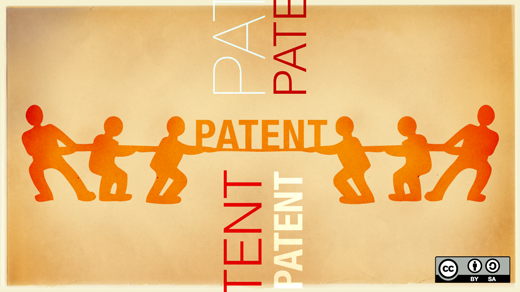Open source community members and most everyone else involved in software are concerned about patent lawsuits and the activities of non-practicing entities (NPEs). While we all have a sense from personal experience or by reading the news that patent litigation and NPEs are a large and growing concern, at times it's hard to see the forest for the trees. A new report from a respected accounting firm gives a bird's eye view of the forest.
According to PricewaterhouseCoopers' (PwC) 2013 Patent Litigation Study, 2012 was a "banner year for patent infringement litigation." Patent actions continued their dramatic rise in 2012 with 5,189 filings—the highest number ever recorded, and a 29% rise over last year, primarily resulting from the impact of the anti-joinder provision of the America Invents Act. Meanwhile, the 2012 median damages award, boosted by several unusually large damages awards, rose to nearly $10 million, which is double the average award seen over the previous six years.
"Three cases yielded $1 billion or more in patent infringement damages awards this year, which is monumental. Prior to 2012, there were only three awards that ever eclipsed this high mark," said Chris Barry, Forensic Services partner with PwC. "With the significant increase we are continuing to see in patents granted and litigations filed, patent infringement litigation shows no signs of waning. Companies and their patent litigation counsel need to be aware and prepared for this growing trend as they plan for the coming years."
Nonpracticing entities (NPEs) continued to play a critical and growing role in 2012 patent litigation activity and are drawing increased attention from policy and lawmakers. In 2012, NPEs accounted for over half of the new patent lawsuits filed, although only 16% of decided cases. NPEs' median damages awards have averaged twice the median award for practicing entities over the last 12 years.
NPEs filed more than half of 2012's patent suits, and their power isn't waning. According to PwC, in the past 12 years, the median damages award for NPEs has averaged twice the median damages award for practicing entities. But, operating companies have a somewhat higher rate of success in patent litigation, the report found, winning 38% of the time from 2007 to 2012, compared to a 26% success rate for nonpracticing entities. And, according to PwC, not all NPEs are created equal. University and non-profit NPEs had the highest success rate among NPE litigants, while individuals' median damages award is considerably lower than the median award of company or university NPEs.
PwC's 2013 Patent Litigation Study also found that patent plaintiffs tend to favor filing in a select number of jurisdictions, namely, the federal courts in northern Virginia, Delaware, and east Texas. According to the study, these courts tend to be more favorable to plaintiffs in patent cases, "with shorter time-to-trial durations, higher success rates, and larger median damages awards." In a new feature in this year's report, PwC broke down statistics for the top 50 judges who handle the most patent litigation, including the median damages awarded in their court and the litigation success rate of patent owners.
For instance, patent owners win their cases 37.9% of the time before Judge Sue L. Robinson of the District of Delaware, who topped the list of most active patent judges, and they are awarded median damages of $21.2 million, according to the report. By comparison, patent owners are successful 84.6% of the time before Judge Ron Clark of the Eastern District of Texas, number six on the list, with median damages of $6.7 million, the report found. NPEs follow the same trend, with the top five federal district courts accounting for 39% of all identified decisions involving an NPE as the patent holder, with the Eastern District of Texas at 12%.







Comments are closed.